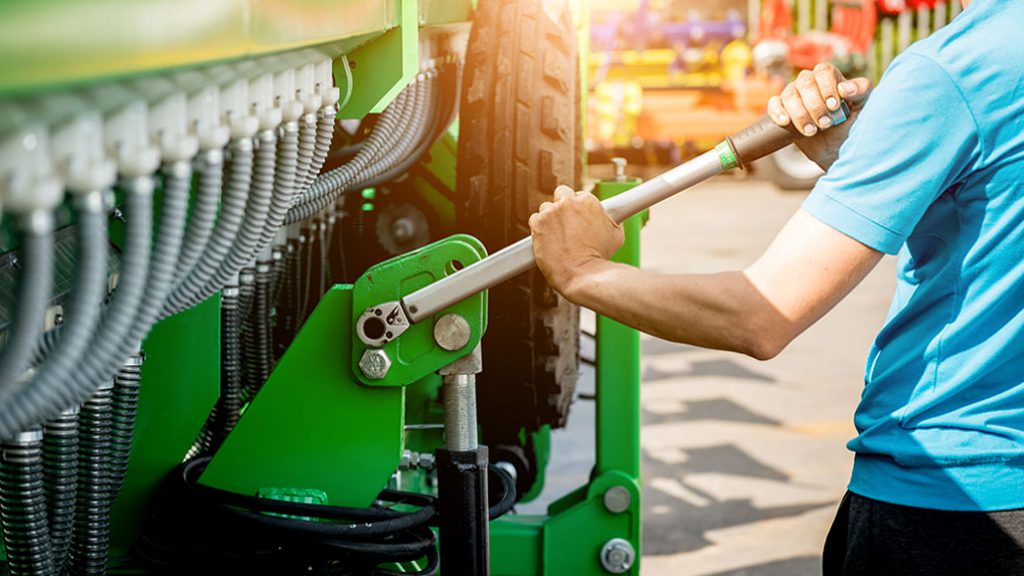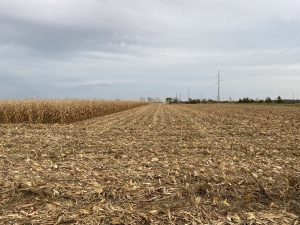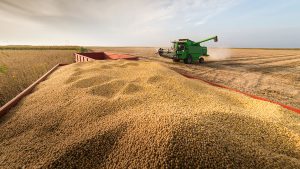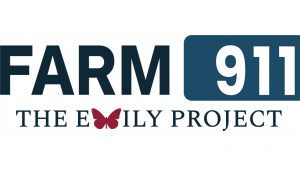Combine ready
CORN AND SOYBEAN HARVEST

“don’t get yourself in a yank,” says Alex Barrie, soil management engineer with the Ontario Ministry of Agriculture, Food and Rural Affairs (OMAFRA). “One of the first things that people do when it comes to harvest is they think they have to have everything done by a certain date, which then causes problems down the road.”
Barrie is no stranger to the mechanical problems that can occur with a combine during harvest. He grew up on a farm, worked as a custom combine operator travelling across the U.S., and was a test technician for an agriculture equipment manufacturer.
Based on his experience, when it comes to preparing the combine for harvest, Barrie says it is important for farmers to remember to keep a level head and ensure what you are doing is safe and is the right way to do it. Don’t take shortcuts that will compromise safety just to save a few minutes. The guards are in place for a reason, and that reason is to keep you and your digits safe from anything rotating.
MACHINE MAINTENANCE
By the time corn and soybean harvest rolls around, farmers may have already spent time in the combine for wheat harvest. And hopefully, any trouble indicators, such as weird sounds, excessive heat, and chipping paint, were addressed in August.
If you used up any spare parts, such as belts, or even grease tubes, make sure you order in replacements ahead of time — Barrie knows it may be a small thing, but you don’t want to waste time with a part on backorder or a trip to the store to find what you need is out-of-stock.
The best tip Barrie has learned, though, “just keeping your knife maintained. It’s not just a bar with some teeth on it.”
Check the distance between the guard and the sickle section is tight, and make sure the guard has sharp corners, to keep it working at its best.
Slat bars should be straight and parallel with the drum. Chains can stretch unevenly causing poor alignment. The centre chain will stretch first because it takes the most abuse.
“Anything in the combine that needs to grab material should have a nice crisp edge on it,” recommends Barrie.
On rotor combines, there typically aren’t any adjustments to make on the feed accelerator but it is commonly a choke point for material so bars should be in good shape and belts and bearings should be checked as they can be a point of failure.
In the rotor and concave, make sure components are free of wear, and there are no sharp transitions between components to allow smooth material flow.
MACHINE OPERATION
When setting up the combine for the season, take the time to adjust the header height and header angle, this will affect how much material other than grain (MOG) enters the machine. Too much MOG can decrease separation efficiency in the separator and grain losses due to poor separation are difficult to recover.
“Increasing cut heights can reduce fuel usage and help travel speeds. It’s all about how much material your combine can properly thresh.” notes Barrie. “The flatter you can run the draper header or auger platform, the easier it is going to be to get that material over the knife, gathered up by the auger or the belts on the draper platform and into the combine smoothly and efficiently.”
Large volume crops should have the drum height raised up to allow for smoother feeding from the drum to the header. Faster feeder chain speed is going to increase travel, but, “you’re only as good as your slowest part,” says Barrie, and components downstream need to be able to keep up.
The distance between rotor threshing elements and concaves will affect how the seed is removed from the plant. Concave wire size effects the threshing action for different sized seeds. Corn and soybeans typically use a large and medium sized wire.
The upper sieve should be set to allow material heavier than seeds to be separated out. Increasing the opening will increase the amount of debris being routed through the tailings auger. Decreasing the opening of this sieve will reduce tailings but will increase losses out the back of the machine.
The chopper is an important component for no-till farmers. You want the combine to spread the material out evenly, the same width as the cutting width. There is usually a set of stationary knives that help break up MOG, “but in green conditions you might want to drop those knives down to eliminate a choke point,” recommends Barrie.
LOSSES
There are many types of losses that can happen when it comes to harvest. Environmental, header, rotor, and sieve loss.
Environmental loss happens, before you even step into the field. This type of loss isn’t your fault, it is caused by wind, rain and other environmental factors.
Header loss could be because the reel was too fast or too slow. Barrie recommends matching your header speed to your travel speed or raise the reel.
Rotor losses occur when the seed does not separate properly. You can count these seeds under a dropped windrow.
Sieve loss occurs when seeds that are separated from the MOG do not fall through the sieve. You can either open the top sieve or reduce fan speed to correct this issue.
How can you estimate your losses? Count the number of seeds in a unit area, and average that area.
“I use my ball cap, a hoola hoop, or a bucket and count the number. I do simple math and multiply that number of seeds by the number of units areas in your target unit of measure. Divide that number per area by the number of seeds in the volume you want,” says Barrie. “Obviously, there’s a lot more technically than throwing a ball cap, but this is how I figure out my losses.”
A common rule of thumb for losses for soybeans with the average of 60 bushels per acre would be six to seven seeds per square meters. If you follow Barrie’s ball cap suggestion, two seeds under a ball cap would be approximately one bushel per acre.
Paige Miller is a communications coordinator for Grain Farmers of Ontario. •
























